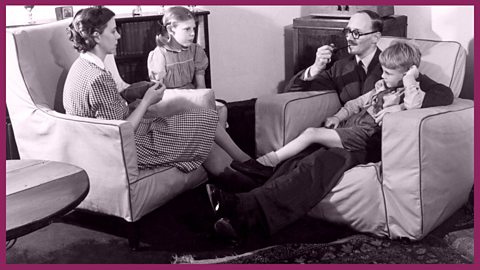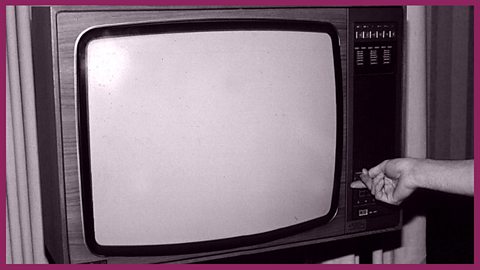91»»±¨ ANNOUNCER: Good evening, everybody. This is a very exciting moment for us in television. Tonight I'm not speaking to you from the familiar studios at Alexandra Palace, but from a small room in the new transmitting station at Sutton Coldfield. On behalf of the 91»»±¨ I offer a special greeting and a warm welcome to our new viewers in the Midlands. Here to open the transmitting station officially are the Postmaster General, the Right Honourable Wilfred Paling, the Vice Chairman of the 91»»±¨, the Dowager Marchioness of Reading, Sir William Haley, Director General of the 91»»±¨ and the Mayor of Sutton Coldfield, Councillor [name uncertain]. And to speak to you first, here is Lady Reading.
LADY READING: We have here the most powerful television service in the whole of the world, and we feel very much that it would never have been possible, had it not been for the individual effort of the practical man on the job, his determination, his resolution and the work he put in to the making of the whole. The service of the Midlands is going to make a very real difference to people in the south of England and in London. It's going to give an opportunity to the people in the metropolis to know the Midlands better. And just as stress and dilemma in the war made us understand each other better, so will the advance of television give us an opportunity to get to know each other better and in a more understanding fashion.
1949 -The opening of the 91»»±¨'s Midlands relay station.
Television was invented by John Logie Baird, who demonstrated his revolutionary invention for the first time in 1926. The 91»»±¨ had been established in 1922 to broadcast radio programmes, but it began experimenting with the new technology and in 1936 regular transmissions began from Alexandra Palace in London.
To begin with the two-hour daily broadcast (except Sundays) reached just 100 or so television sets in the south-east of England. The early programmes owed much to the theatre, with music and variety performances particularly popular.
However, the potential of the medium was quickly identified by both programme makers and the public. In 1937 tennis from Wimbledon was broadcast for the first time; the FA Cup and test match cricket followed in 1938. By 1939 programming had extended to 7 days per week and 23,000 licences had been bought. But on 1 September 1939 the screens went blank: Britain was at war with Germany and programming did not resume until June 1946.
When television returned it was still restricted to the relatively narrow radius of homes within reach of the transmitter. However, television began a rapid expansion after the war, commencing with the opening of the Sutton Coldfield relay station in 1949, which brought television pictures from London to the Midlands.
Images in the video include the control room at Alexandra Palace, the opening of the Sutton Coldfield transmitter and early studio scenes from 91»»±¨ Lime Grove.
Play next
The joy of owning a television. video
1949 - A family rejoices in the entertainment by their new television set.

What will the benefits of TV be? video
Speakers consider the benefits of TV at the opening of the Midlands relay station

An early TV 'addict' video
A young mother enthuses about the joys of television - including its educative value.
